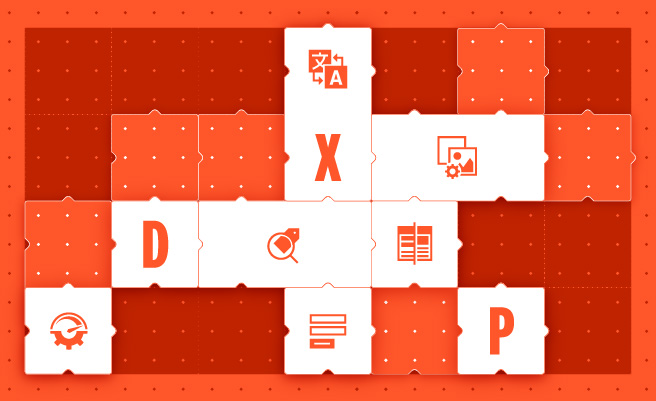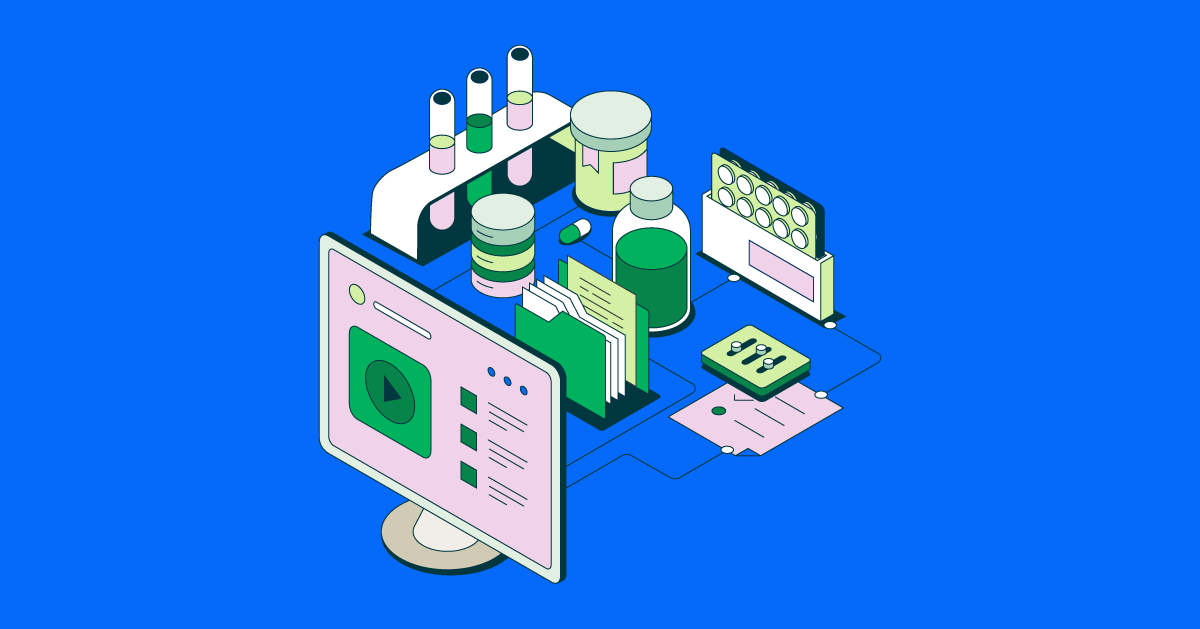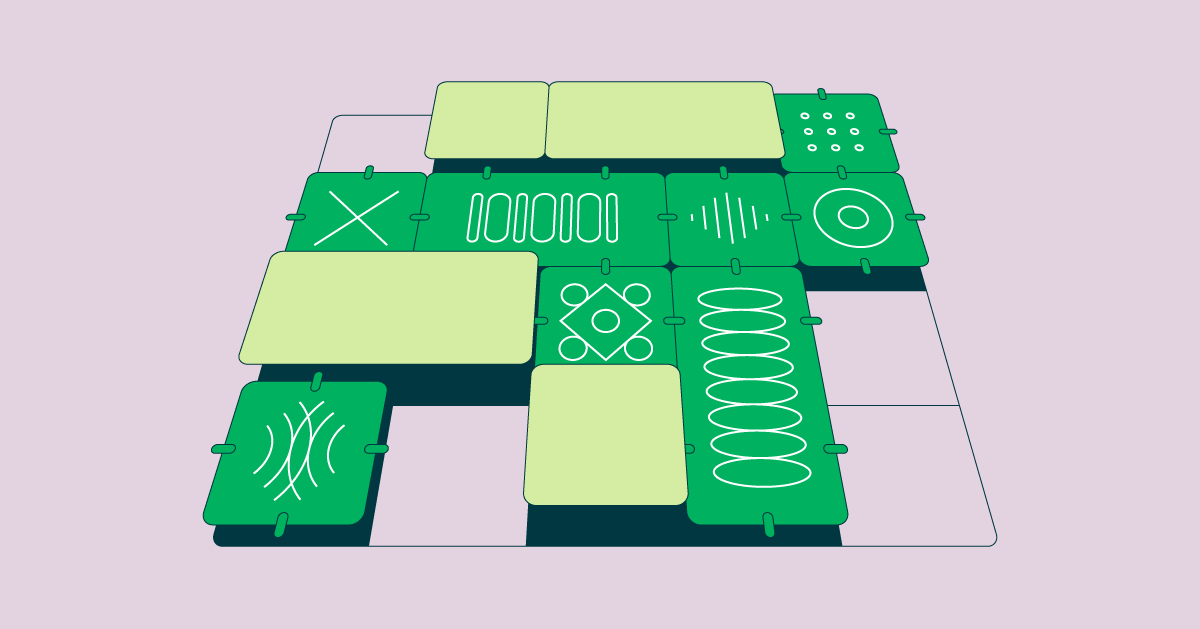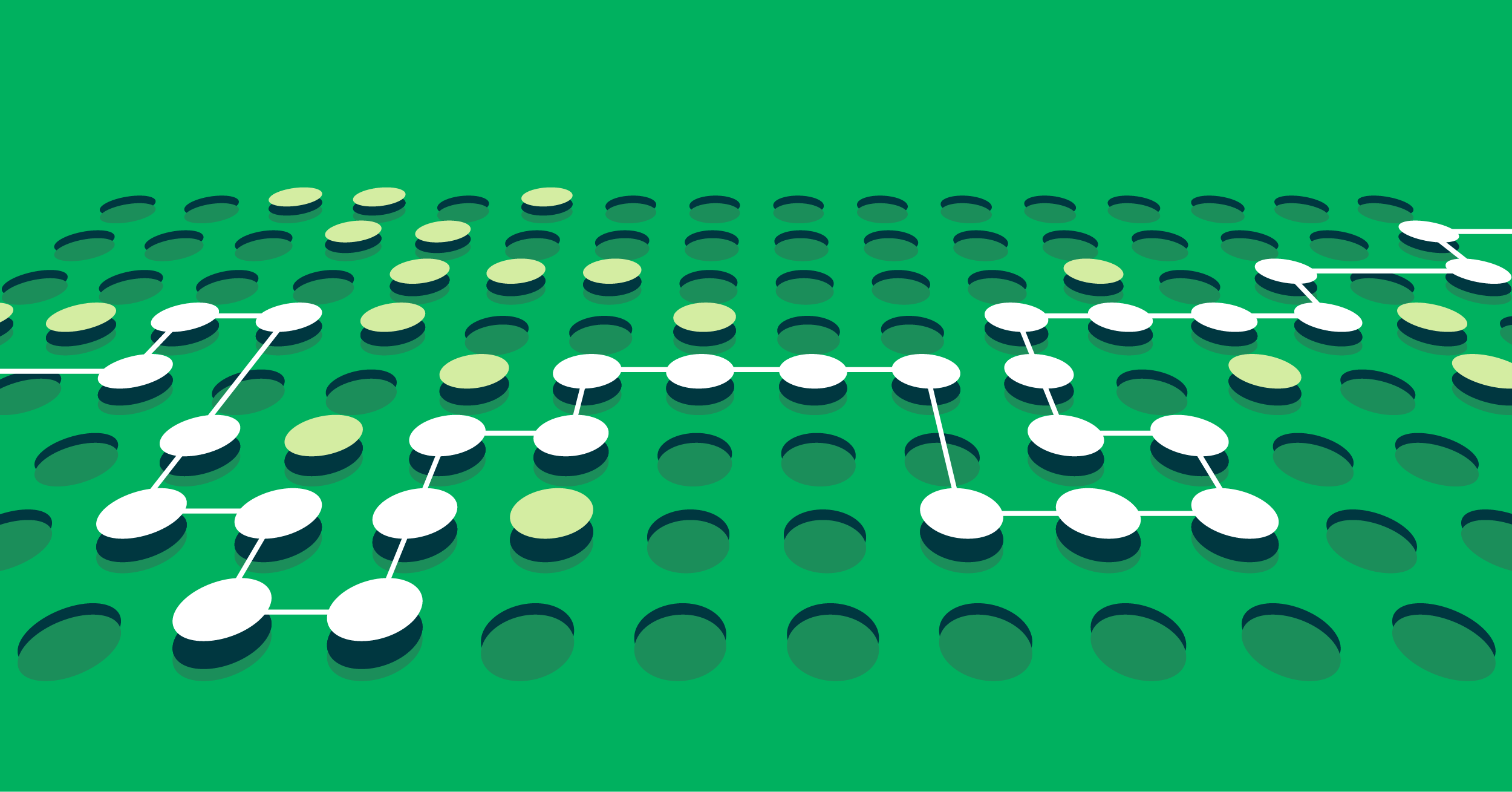Composable DXP
Customer experience impacts how your customers feel about you more than ever before.
It has become more than just the touch points when buying a product or service, with a 2020 study revealing that 74% of consumers are likely to buy based on experience alone. It now includes their entire research process well before they even make a purchase.
The challenge? Marketing and IT teams work with outdated, inflexible tech stacks. Tools you use to deliver customer experiences are often bulky, slow, and disconnected.
One report revealed it takes an average of 11 months to implement a digital experience system. Chances are your competitors are moving faster than that, and your (potential) customers have raised their expectations accordingly. You need a way to run your customer experience efforts from a single place and keep it scalable and flexible.
In this guide, we dive into a composable digital experience platform, its benefits, and your roadmap to implementing it in your business for maximum results.
What is a composable DXP?
A digital experience platform, or DXP for short, is a platform that allows companies to optimize the digital customer journey and experience. It creates the foundation to manage all content and campaigns in a central hub.
Nowadays, almost every aspect of a company is digitized to some extent. Unlike content management systems, whose sole purpose is to create and manage content, a DXP is the platform that enables you to tap into all digital aspects of your business and use them to create a compelling journey from discovery to post-sales.
Monolithic DXPs, also called suites, can be a good start, but come with the limitation of lock-in by a single vendor or technology. They can be quite complex and require you to hire team members with specific skill sets to build the experiences you want and often come with a higher total cost of ownership.
A composable digital experience platform removes this challenge and takes this centralized approach to the next level.
A composable DXP works as the backbone to your digital content. Unlike monolithic platforms, you can tailor it around your existing processes and infrastructures. APIs and DXP integrations become your building blocks so you can deliver digital experience as quickly as your audience needs them.
Composability in DXP means you can bring your entire marketing stack together, including content management, marketing automation, ecommerce, personalization, and analytics. Rather than having to think of all of these tools as separate entities, they can be viewed as a group of DXP partners. This single access point makes it easy to connect with your customers in a smarter way.
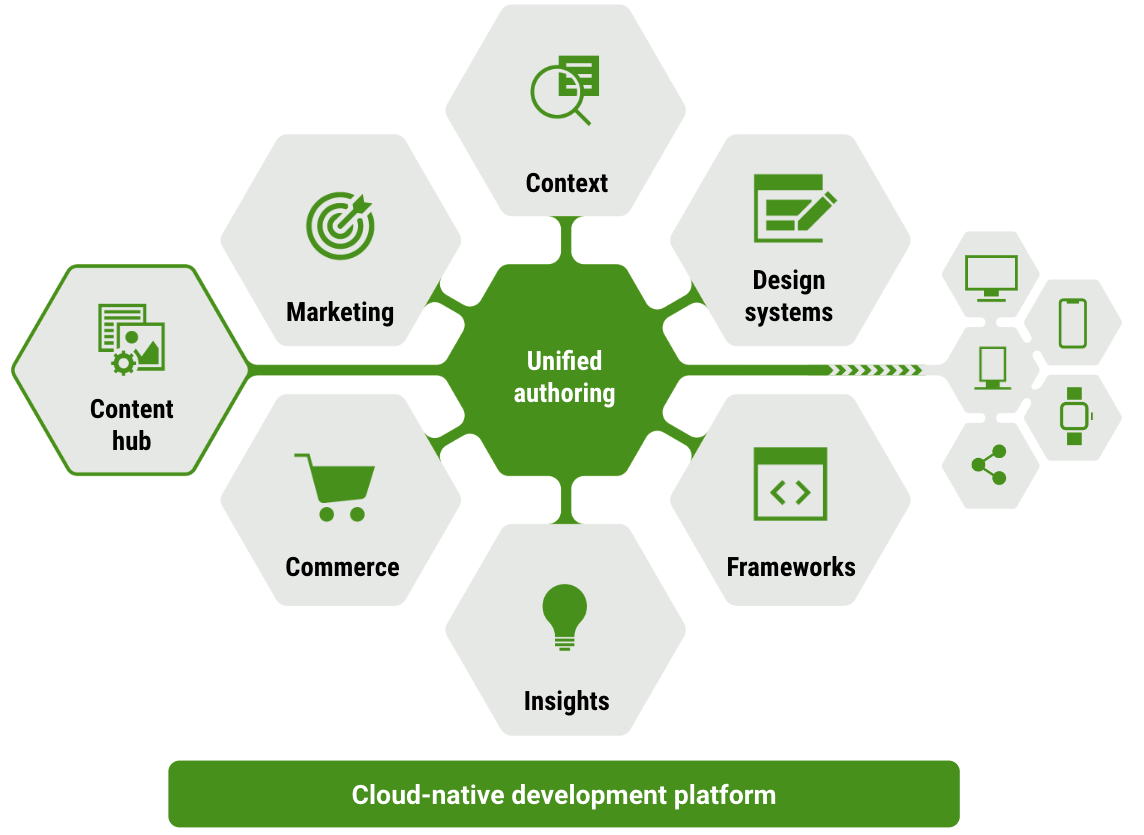
Magnolia is a composable digital experience platform that consolidates content from different sources in its content hub, connects any data source, application, or digital channel, and provides unified authoring in a central management interface.
Magnolia’s integrations of third-party technology include ecommerce systems, analytics, and marketing automation tools. Its customizable solution comes with many out-of-the-box capabilities, such as visual editing, preview, personalization, campaign management, and digital asset management, helping businesses create fully integrated customer experiences and speeding up digital delivery.
Benefits of a composable DXP
Let’s dive deeper into why you’ll benefit from a composable DXP.
1. It’s flexible
The market evolves all the time—and with it the expectations of consumers.
Suite solutions for managing your digital presence usually come with vendor lock-in. When you need a feature your vendor doesn’t provide, you don’t have a way to change that quickly. Let’s say, you want to add Apple Pay to your ecommerce checkout flow, but because you can’t switch to a vendor that offers it, you simply don’t introduce Apple Pay.
If your customers need it, the risk of losing them grows, whether first-time, potential or returning customers.
A composable DXP removes this issue completely. The platform becomes your control center for all customer touch points and lets you integrate technologies to provide the ultimate customer experience, whether that technology is a new payment method or the latest iteration of software driven by artificial intelligence.
The above example is exactly what happened to Dippin’ Dots. Their ecommerce tool struggled to keep up with payment methods like Apple Pay and Google Pay, and the checkout process was inefficient. Magnolia’s composable DXP allowed them to integrate a more powerful ecommerce solution into a marketer-friendly content and digital asset system.
2. It’s customer-centric
Composable DXPs allow you to put your customer first.
Instead of forcing them into a predefined customer journey, you can rely on composable DXP as a central platform for all customer behavior and adapt your assets and strategies based on what you learn.
Here are two key ways you can do this:
Create omnichannel experiences. Easily launch consistent campaigns that support shopping not just on your website, but also on social media, in a mobile app, and any new, emerging channel. You’ll streamline your efforts by working on all channels from a central platform.
Better understand your customers. Integrate analytics and reports from every channel you use to understand how your customers navigate your digital experiences so you can adapt. As much as 80% of consumers are more likely to buy from brands that offer personalized experiences—data from these channels will allow you to do that.
Basellandschaftliche Kantonalbank (BLKB), for example, wanted to create a modern online experience that offers information, inspiration, and the ideal user experience.
Magnolia helped BLBK with their mission by allowing them to build a website that provides e-banking customers and website visitors with a consistent, modern customer journey, improving the customer experience and leading to an increase in website conversions.
3. It’s customizable
Vendor lock-in has another downside: you’re forced to tailor your entire marketing strategy to it. You have to outline your limits based on the CMS or DXP solution you use and navigate inside of it.
This hinders your creativity and your growth. A composable DXP allows you to plan and launch any campaign you can dream of, run experiments, and adjust as you see what works and what doesn’t. Thus, you can build your technology stack as you see fit.
Take Essentra, a manufacturing company that wanted to keep using their ecommerce and inventory system, but needed a more flexible CMS to give more power to marketers and reduce load on the IT team.
They were able to do so with Magnolia, while also adding other systems like a plug-and-play digital asset management solution. Without the limitations of a legacy system, they’ve launched local websites in five countries and plan to expand to 20+ more markets.
A beginner’s guide to Digital Experience Platforms: DXP 101: From disjointed to seamless customer experiences
Straight-talking DXPs
A straight-talking guide to digital experience platforms.
4. You can implement it faster
Marketers rely on IT teams to turn their ideas and plans into tangible campaigns and results. The problem with that is that it doesn’t allow the marketing team to move fast enough.
On top of that, slow implementation means slow results and feedback, so you can’t optimize your campaigns frequently. By the time you do, your competitors might be too far ahead.
A composable DXP allows marketers to build web experiences, reuse content, personalize it at scale, test multiple variants, and get detailed insights without learning new processes or being slowed down.
Let’s look at Ramsey Solutions, for example. Ramsey Solutions is an organization that gives people practical advice in the areas of money, business, leadership, and personal development. Creating a landing page from start to finish took Ramsey Solutions an average of a month, with much of this time spent in development.
Using Magnolia’s centralized content hub, Ramsey Solutions developed a design system of Magnolia components and combined 15 websites into a single website, leading to faster creation of pages and a 50% reduction in time-to-market.
5. Faster time to value
Taking a composable approach when it comes to choosing your DXP allows you to select the business capabilities that matter most to your brand. If you need customer data platforms, artificial intelligence tools, marketing automation, ecommerce functionality or something else. All of these features can be leveraged to help you meet customer expectations and enhance the user experience with personalized content.
This provides you with an improved ROI much faster than other tools as you aren’t left with an unused suite of tools in your technology stack.
Emmi, a leading Swiss manufacturer of high-quality dairy products, for example, used several different content management systems to manage its 80 websites, resulting in increased cost and human effort to manage content.
After migrating all websites to Magnolia’s composable stack, which leverages modular, reusable components and templates, Emmi is now able to launch a new website at 10% of the costs, while ensuring consistency across all of Emmi's brands.
How to define your composable DXP requirements
Choosing a composable DXP is a decision that will support your marketing for many years to come. It’s essential to choose the best solution for your business now, rather than having to choose again down the road.
Use these prompts to solidify your composable DXP requirements.
1. Identify your goals and business requirements
Instead of only working with a revenue or sales goal, break your business goals into more specific areas you want to excel at.
These business goal categories can focus on:
New and repeat customers: How much of your sales and revenue should come from new leads? How many past customers can you turn into repeat sales (and generate loyalty)?
Publicity and brand awareness: Think press coverage, content shares and brand mentions on social media, backlinks to your website.
Customer satisfaction: Scores like customer satisfaction score (CSAT) and Net Promoter Score (NPS).
Customer loyalty and referrals: The number of leads and customers that come from referrals and/or from public reviews.
Breaking into a new market or expanding your market share: The percentage of market share you own in a target area.
2. Identify marketing channels and formats that will get you there
What do your customers need in order to help you hit those business goals? Where do they spend their time and what do they expect from their online experiences? Take the time to research your target market and survey your existing audience to learn how they make decisions.
Of course, don’t forget your existing processes and data. How many websites do you manage? How many newsletter subscribers? How much traffic and online spend do you handle? How many transactions?
Your composable DXP needs to work around those existing processes and help you unlock new growth opportunities based on what you’ve learned from your audience.
3. Map out your dream marketing stack
Finally, answer these questions:
Which tools are you already using and seeing great results with?
Which tools are necessary in your stack, but could be replaced with a better (more modern, flexible, etc.) version?
Which tools are not part of your stack yet, but you know you’ll need them to meet the needs of your audience?
Use this list when narrowing down your composable DXP options and make sure you only keep those that will allow you to extend your composable DXP through integrations with these tools.
4. Consider these DX capabilities
Marketing enablement: Do you want your marketing teams and business users to create and change content without relying on developers? Magnolia provides a unified authoring interface with a visual editor and an integrated UX, enabling marketers to create digital experiences and campaigns without developers.
Multi-site, multi-language management: Are you managing multiple brand websites or sites in different languages? With Magnolia's multi-site capabilities, content authors can manage hundreds of sites in the same Magnolia environment, creating synergies and reducing the time and resources required to manage them. Content authors can also manage translations for multiple languages in Magnolia to suit their target audience.
Personalization: Are you planning to create targeted content for specific audiences? Using Magnolia Personalization, content authors can create relevant and tailored digital experiences to increase conversion rates and fuel better user experiences.
Digital Asset Management (DAM): Do you need a DAM to manage images and other assets? Magnolia offers a DAM out of the box or integrates with your existing DAM. The Magnolia DAM manages digital assets, such as images and videos, and delivers them to various channels, including websites.
Workflows: Do you require specific approval and publishing workflows due to compliance or governance reasons? Magnolia’s workflows enable organizations to define and automate their business processes and content workflows. With Magnolia, you can ensure that each step in your digital delivery process is completed correctly and on time.
Headless CMS: Are you planning to take the headless approach and develop a decoupled frontend for every project? Unless you answer yes, a DXP that comes with a hybrid-headless content management system (CMS) might be your best choice, as you don’t have to limit yourself to being 100% headless. Magnolia’s hybrid-headless CMS provides marketers and content authors with a centralized content hub and unified authoring to create, manage, and distribute content across channels. Magnolia’s visual editor offers convenient in-line editing, drag-and-drop components, and an omnichannel preview.
Headless development: Are you planning to develop any custom frontends using a JavaScript framework? If so, how can you simplify the development of decoupled frontends? Using Magnolia’s Headless Accelerator, frontend developers can build the frontend application for a headless architecture using a programming language and IDE of their choice, while leveraging pre-built UI patterns, and relying on a unified, automated workflow with type-safe programming.
Low-code development: How much are you willing to invest in the customization of your DXP, for example, to create integrations or configure endpoints? Magnolia’s low-code development allows developers to configure endpoints or create integrations with minimal coding using file-based configuration.
Composability: Which internal systems or best-of-breed martech tools do you want to integrate into your DXP? Magnolia’s composable DXP is built on a composable architecture that allows you to easily integrate with your existing ecosystem, including your CDP, CRM, ecommerce system, analytics tool, and search.
Security: Do you require role-based access, Single Sign-On (SSO), or other security features? Magnolia's security is enterprise-ready and certified by an external security company.
Your composable DXP roadmap
Next up is your composable DXP roadmap: choosing a solution and implementing it in your business.
Step 1: List your composable DXP options
Start by making a list of options that match your composable DXP requirements. Start with:
Software review sites like G2 and Capterra. Make sure to pay special attention to reviews by people in roles similar to yours and in companies of similar sizes and verticals.
Gartner Magic Quadrant. Gartner evaluates best solutions for a range of categories; get the one for digital experience platforms here.
Be sure to involve your marketing and IT teams, especially the team members that will use the DXP on a daily basis. These teams combined likely have decades of unique experiences, so make sure you put them to use.
Step 2: Book product demos
Book calls with the sales team of each of the composable DXP options on your list. Get your marketing team to recommend questions relevant to their role and use these questions as you progress through the demo.
This will help you get not only the overview of the product, but also the specific way you can apply it to your setup and processes.
Step 3: Ask for case studies for companies similar to you
Don’t stop at asking hypothetical questions on your product demo. Go the extra step and look for—and ask for—case studies and past customers with similar requirements to yours.
This can include number of employees, target market, team size, product type, marketing campaign types, and much more.
This will show you how they solved a pain point similar to yours and how a specific composable DXP provider might work for you.
Step 4: Map out transition time based on your best option
By this point, you likely have a frontrunner. Use the information you collected about it to map out a timeline of its implementation.
Think about:
Functionalities of your current setup that the composable stack will replace,
Tools you’ll completely remove from your stack because they no longer serve your goals well,
New tools you’ll add to your stack and integrate with the DXP.
Be aware of which functionalities are the highest priority and which ones can wait. Map out the required input from different team members in this process so that they can plan accordingly, too.
Step 5: Negotiate and close
Talk to your vendor about pricing and licencing options, a trial period, and discounts (especially if you’re buying a significant number of licences).
As you close this deal, get your composable DXP provider to provide details around onboarding and implementation so you can start following your implementation timeline from the previous step.
Magnolia as your composable DXP solution
Now you know. To create exceptional customer experiences online, you don’t need a one-size-fits-all solution. You need a flexible, customizable, easy-to-use and integrate composable DXP solution.
Magnolia lets you manage your content in one central hub, deliver personalized experiences efficiently, and optimize your shopping experiences.
Use APIs and connector packs to extend Magnolia into your other core digital systems. Instead of getting stuck with legacy systems, you’ll have access to the most powerful tech stack at your fingertips.
If you want to see a composable DXP in action, book a live demo with Magnolia. You’ll be glad you did.


